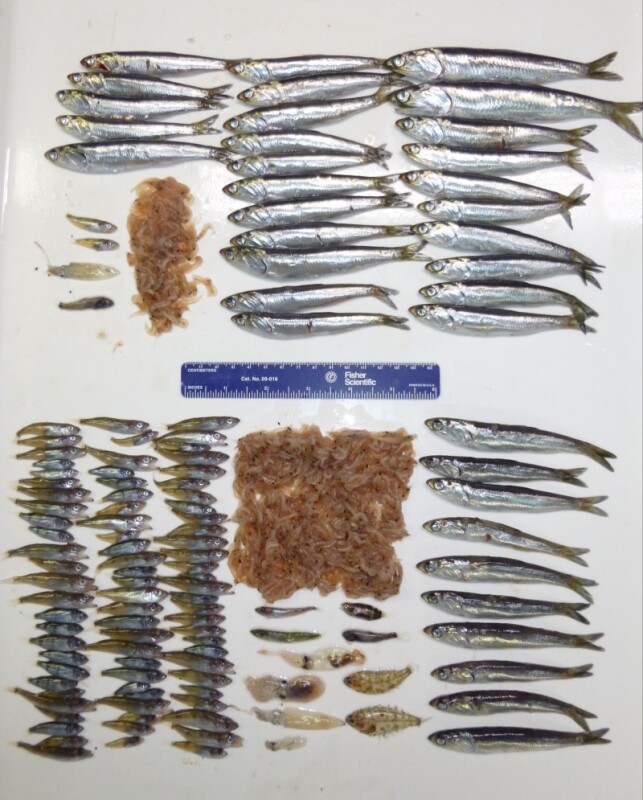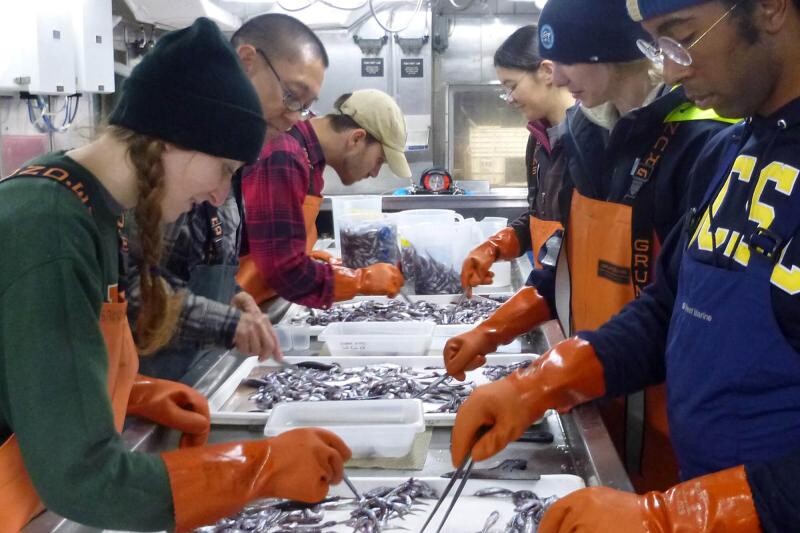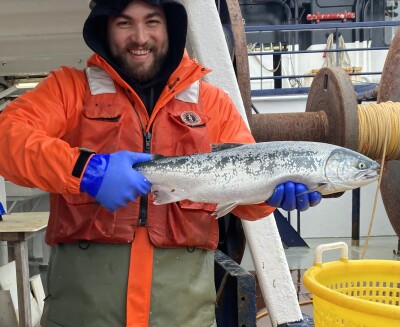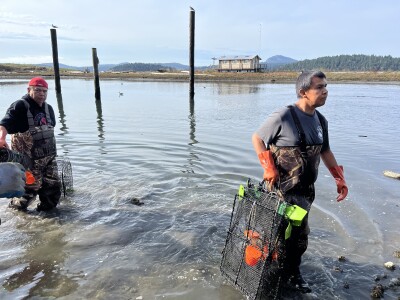A vitamin deficiency linked to an enzyme found in anchovies that breaks down Vitamin B1, or thiamine, is threatening the survival of Chinook salmon in California and far beyond.
"An interesting piece of the puzzle is that we don't have evidence for diminished sources of thiamine in the ocean food web," said Nathan Mantua, a research scientist with NOAA Fisheries' Southwest Fisheries Science Center in Santa Cruz, Calif. "Instead, we have evidence that anchovy carry an enzyme called thiaminase that destroys thiamine in the predator's stomach when the anchovy is digested."
Mantua is part of the team of 37 coauthors of a new research paper published in Proceedings of the National Academy of Sciences of the United States of America that links Vitamin B1 deficiency to the anchovy-dominated diet that likely resulted in the death of nearly half of California's wild winter-run Central Valley Chinook salmon fry in 2020-2021.
"It has been a fascinating five years of research working with an entirely new group of people for me in our ongoing investigations into thiamine deficiency in California's salmon," said Mantua.
The issue came to their attention just before the Covid-19 pandemic hit the U.S. in January of 2020, so they had to develop a research program at a time when there were lots of big changes happening to the way they worked in the office, on the ocean, and in rivers. In spite of all those hurdles, the group came together to rapidly develop a research network that worked together really well, he said.
A research summary released by NOAA Fisheries on June 25 notes that thiamine deficiency is linked to large-scale shifts in the ocean ecosystem, shifts that changed the prey adult salmon consume before returning to West Coast rivers to spawn. Longtime loss of habitat and water has already weakened many California salmon populations, and further declines from thiamine deficiency or other impacts may lead to their extinction, the report said.
For salmon in California, it has been just one blow after another, Mantua said. "They have lost habitat, water, and access to higher elevations. Many are maintained in hatcheries. There is really no safety net left. Any new impact could be the final flow, especially if it continues over an extended period."
While the research reports on the cause, extent, and impact of thiamine deficiency in salmon in California's Central Valley, the problem has also been noted in some salmon in the Klamath River in Northern California, including coho salmon.
The problem became evident as far back as 2020 to researchers from NOAA Fisheries and other federal and state agencies and universities. Fish hatchery staff noticed juvenile offspring of returning adult salmon swimming upside down and in odd corkscrew patterns, many of them dying. Further studies determined that the juveniles were deficient in thiamine.
Researchers found that injecting adult female salmon with thiamine when they returned to hatcheries helped produce healthy offspring. Eggs at fertilization or just-hatched fry can also be treated in a thiamine bath at hatcheries, but fisheries managers have no real option to help wild spawning salmon not captured weeks before spawning, which is the case for most salmon spawning in rivers.
Researchers studying this thiamine deficiency also found earlier reports of cases in the Great Lakes, where scientists have been studying the issue for 40 years, and Europe, where the diet of the fish had changed. Mantua said researchers have seen this issue in other fish whose diet is primarily anchovy, including Atlantic herring and Atlantic salmon in the Baltic Sea in northern Europe. That led them to suspect that the deficiency could be related to adult salmon eating large amount of anchovy, which had begun to dominate ocean waters off Central California.
"Conditions favorable for thiaminase are the same conditions that make it favorable for those fish to be in this place," he said.

Rachel Johnson, another research scientist at NOAA's Southwest Fisheries Science Center, said it has been an especially difficult mystery to solve because the source of the problem is in the ocean, while effects show up in rivers and hatcheries. "When young salmon started dying in hatcheries, the ocean and even the nutritional health of adult female salmon weren't where we first thought to look," she said. Marine isotopes in the eggs of salmon returning with thiamine deficiency finally confirmed the connection to anchovies in the ocean, she said.
The cause of the ongoing anchovy boom is not clear. Some studies have tied it to changes in the ocean, perhaps related to coastal upwelling of water from the deep ocean that provides nutrients to feed the marine food web. According to the report, that may favor the growth and reproduction of anchovies, but Mantua said they are unaware of evidence that current ocean conditions are negatively impacting anchovies.
John Field, who leads the Fisheries and Ecosystem Oceanography program at the Southwest Fisheries Science Center, noted that the ongoing anchovy boom is taking place in concert with other changes in the ecosystem such as an increase in frequency and intensity of harmful algal blooms and fishing that may have reduced some other species such as Pacific herring.
Field said these changes may be amplifying the role of anchovies as a vector of various ecosystem maladies, such as thiamine deficiency complex, and domoic acid toxicosis, in the diets of many predators who overwise might have had a more diverse array of foraging opportunities.
"While anchovies generally typify the ideal forage fish, they may at times be too much of a good thing," he said.
Researchers also noted that while thiamine deficiency has not been widely known as a problem for salmon, it has been detected in some Alaska salmon populations. They suggest that researchers rarely test for thiamine deficiency, and that it may be more widespread in salmon populations than had been known.
The report also said that the best early warning sign that thiamine deficiency could be a problem for salmon or other species may not be tests of the salmon themselves, but due to large-scale ecosystem shifts detected through ocean surveys.
"Ocean ecosystem changes involve so many species and factors that they can cause unexpected impacts," said Mantua. "You need to be ready for surprises as you watch them all play out."







